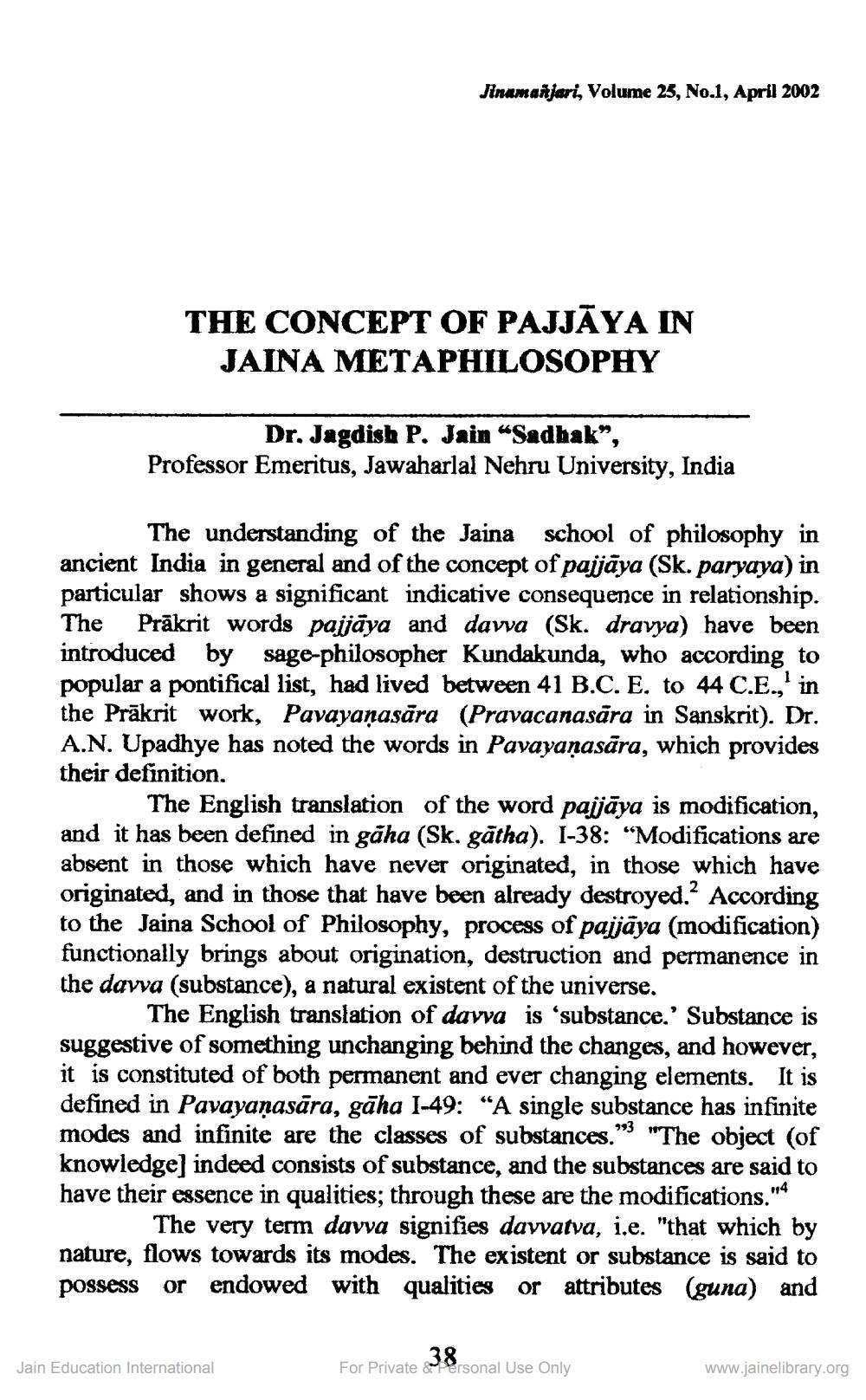________________
Jinamasjari, Volume 25, No.1, April 2002
THE CONCEPT OF PAJJĀYA IN JAINA METAPHILOSOPHY
Dr. Jagdish P. Jain “Sadhak”, Professor Emeritus, Jawaharlal Nehru University, India
The understanding of the Jaina school of philosophy in ancient India in general and of the concept of pajjāya (Sk. paryaya) in particular shows a significant indicative consequence in relationship. The Prākrit words pajjāya and dawa (Sk. dravya) have been introduced by sage-philosopher Kundakunda, who according to popular a pontifical list, had lived between 41 B.C. E. to 44 C.E., in the Prākrit work, Pavayanasāra (Pravacanasāra in Sanskrit). Dr. A.N. Upadhye has noted the words in Pavayaņasāra, which provides their definition
The English translation of the word pajjāya is modification, and it has been defined in gäha (Sk. gātha). 1-38: “Modifications are absent in those which have never originated, in those which have originated, and in those that have been already destroyed.? According to the Jaina School of Philosophy, process of pajjāya (modification) functionally brings about origination, destruction and permanence in the davva (substance), a natural existent of the universe.
The English translation of davva is 'substance.' Substance is suggestive of something unchanging behind the changes, and however, it is constituted of both permanent and ever changing elements. It is defined in Pavayaņasāra, gāha 1-49: “A single substance has infinite modes and infinite are the classes of substances." "The object of knowledge) indeed consists of substance, and the substances are said to have their essence in qualities; through these are the modifications."4
The very term davva signifies davvatva, i.e. "that which by nature, flows towards its modes. The existent or substance is said to possess or endowed with qualities or attributes (guna) and
Jain Education International
For Private
Personal Use Only
www.jainelibrary.org




